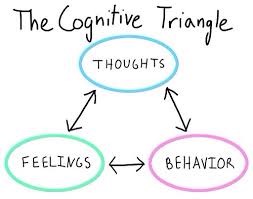Instructions
This activity is drawn directly from Patricia Broderick’s Learning to BREATHE Curriculum and her lesson on Theme R: Reflections (Chapter 6). It is best used in conjunction with her larger curriculum because it is embedded in a context that helps students understand the nature of their minds.
Setting up the Practice
- Ask for one student volunteer (number 1) to sit in the front or middle of the class.
- Ask for several other student volunteers to be that student’s “thoughts.”
- After student volunteer 1 is seated in the center, have the other students stand in a circle around the seated student.
- Tell students:
- Let’s try an exercise that shows how the mind’s chatter can affect us.
- This student, ______________(name), is a stand-in for all of us. I am going to ask her/him to do something in a minute.
- The other students (use their names) stand in for her/his “thoughts.” I’m going to each of them a name tag and a “thought” to read.
- Give each of the other volunteers a name tag with the name of a role: parent, teacher, friend, self, and an index card with an appropriate message written on it. (See suggested message for various roles below.)
- Put the name tag on each student. Using name tags on a cord that can be placed around the student’s neck makes this easy. Allow each actor to read the message quietly before the activity begins.
Role-Playing Characters
- Tell students: Now I am going to give _______________ (name of the seated student) a math worksheet to do. While she/he is filling out the worksheet, all the thoughts need to walk around her/him in a circle and keep repeating the sentence on your index card. You don’t need to yell or walk too close to the student in the middle. Just remember that you are the thoughts in her/his head.
- The first thought reads the message aloud and begins circling the seated volunteer as that person works on the math sheet.
- One by one each “thought” enters the circle.
- Students in the “roles” walk in a circle around the working student and repeat their scripted message over and over. If teachers use more than four volunteers and space permits, make the circles concentric. This may be done for three to four minutes while the student volunteer works on the problems. At the end, all roles might speak their “thoughts” at the same time.
Discussing the Practice
- After the demonstration, discuss the following questions with the actors and with the whole class:
- How did this experience affect your concentration?
- Were the messages (thoughts) helpful or unhelpful? Pleasant, unpleasant, or neutral?
- How did listening to this affect your mood?
- How difficult was it to stay focused?
- What other kinds of messages or thoughts did you find in your mind at times?
- Call attention to several elements demonstrated in the activity:
- The repetitive nature and automaticity of self-talk
- The positive and negative tone of self-statements
- The impact of mind chatter on attention and concentration
- The universality of the “wandering mind” experience.
Suggested Roles and Messages
Teachers may develop additional roles if they wish.
- Parent 1: “Did you do your homework?”
- Parent 2: “Hurry up and finish, or you’ll be late.”
- Teacher 1: “This test is worth 40 percent of your grade.”
- Teacher 2: “This material will be on your final exam.”
- Friend 1: “Why are you always studying so much?”
- Friend 2: “Did you hear what she said about you today?”
- Self 1: “I’m no good at math. I’m afraid I’m not doing well.”
- Self 2: “I hate math. It’s so boring.”
For a variation, include some positive thoughts like “This is easy because I’m good at math.”
Source
This practice is reproduced directly from Learning to BREATHE, pages 49-50, with permission of the author.
Broderick, P. C. (2013). Learning to BREATHE. Oakland, CA: New Harbinger Publications.




Comments